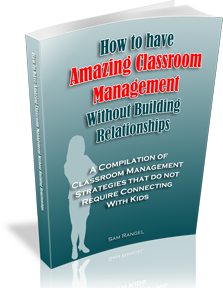There was a time, in the good old days, when I would teach high level concepts, and the majority of my students would get it. Their parents were super supportive, and for the most part, the students were self-motivated. They cared about their education, and life for me as a teacher was good.
I had set the bar high, and my students were successful.
I was proud of the bar that I had set for my students. Since most of them were self-motivated, reaching or exceeding the bar was not too difficult for them.
As the years passed, however, things began to change. Other schools began to be built in the area, and they offered upper-level classes and programs designed to meet the needs of the gifted student, pulling them from our school.
The demographics around my school also changed. I was seeing more students who were not as self-motivated or prepared as I was used to. Parent involvement also decreased.
These students were more “at-risk.” The skills and preparation they had were at a lower level than previous students.
Before, I had a high bar and “high” kids. Now, I had a high bar and “low” kids.
I found that students were not being as successful anymore, and the question I asked myself was: Do I lower the bar, so more kids can be successful?
I want my students to be successful, but is lowering the bar helping or hurting?
Do I keep my bar high, and let the students fail?
Are you finding yourself in the same situation? Are your students not being successful, because they can’t or won’t reach the high expectations that you’ve set for your class?
You don’t want to lower the bar, but you don’t want your students to fail.
“What’s the answer, Sam?”
I’m glad you asked.
The answer is: Don’t lower your bar.
“So, do the students just fail?”
No. The second part of the answer is: Help your students reach your bar.
If you’ve been teaching for a while, you’re probably like I was. I had my lessons for the year. I had my systems in place. My daily routine was set for the whole year. Except for a few minor modifications, what I taught and the way I taught hadn’t changed too much since the “glory days” of the past.
When I realized that the distance between the bar and the level of the students had increased, I had to make some changes. This is what I’m encouraging you to do as well.
How to help students be successful without lowering your bar.
1. Identify their weaknesses. This is one of the first steps. You need to know where students are, before you can teach them. Expecting kids to read a chapter summary when they don’t have the reading skills necessary will lead to frustration for everybody.
2. Connect with parents. Sometimes you’ll find that the parents have ways to motivate an unmotivated student. Most parents will appreciate being kept in the loop when it comes to their child’s education.
3. Review Review Review. Make time to review the concept. Not all students get it the first time.
4. Get help. You’ll find that some students in your class might be more prepared or self-motivated. Use them to help you with the teaching. Partners or cooperative groups may work better than using the lecture style of teaching.
5. Teach toward their learning style. Not every students learns the same. Offer different options for assignments to take advantage of the way different students learn.
6. Detour. If you have to go off course to teach a foundational concept that they should have learned two years ago, it’s OK to take a detour, and teach that concept. I know you don’t have enough days in the year to cover everything as it is, but if kids don’t get that foundation, you can’t move forward anyway.
7. Be compassionately strict. I made up that term. Some kids will just choose to not do the work. “Rigor without relationship is just mean.” Amazing teacher Jeff Baxter told me this when I interviewed him on the Amazing Teacher Podcast. This is so true. It’s OK to be strict, but allow students a second chance. Otherwise, you’ll just be the mean teacher, and you’ll never reach them.
8. Collaborate. Ask your colleagues how they’re being successful with students. Learn from each other. Be open to change how you’ve done it for the last few years.
9. Allow for baby steps. Lifting low students up to the level of your bar won’t be an  overnight endeavor. It will take time, and a lot of effort on your time. You won’t see results right away, but step by baby step, you’ll make a difference in your kids’ lives.
overnight endeavor. It will take time, and a lot of effort on your time. You won’t see results right away, but step by baby step, you’ll make a difference in your kids’ lives.
10. Let technology help. There are so many new ways to support students with technology, and more being developed every day. Brad Currie wrote a guest post where he shares some of the ways teachers can use technology in classroom. Check it out here.
You don’t have to lower the bar, AND your students can still be successful. It just takes a teacher who is willing to make some modifications to build some scaffolding that kids can use as support to reach that bar.
Thank you for all you do to support our kids.
Until next time, here’s to your Success in the Classroom!
Please share.
Thanks,
Sam



